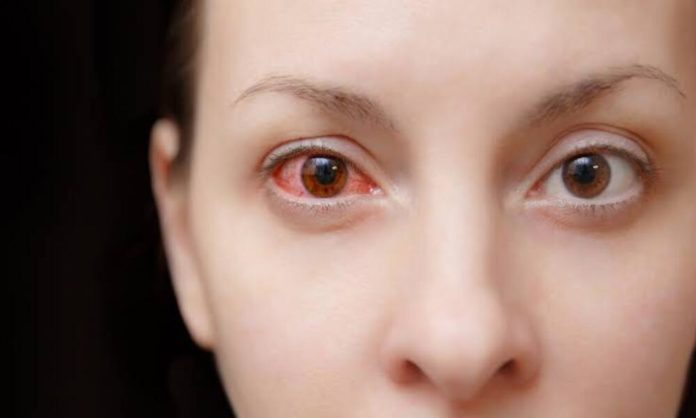Pink eye, also known as conjunctivitis, is an eye condition characterized by inflammation of the conjunctiva, which is the clear, thin tissue that covers the white part of the eye (sclera) and lines the inside of the eyelids. The inflammation in the conjunctiva can cause the blood vessels to dilate, giving the eye a pink or reddish appearance, hence the name “pink eye.”
Pink eye can be caused by various factors, including viral infections, bacterial infections, allergies, irritants (such as smoke or chemicals), and underlying medical conditions. The treatment for pink eye depends on its cause, with viral and bacterial conjunctivitis often requiring different approaches.
Read More: Is There A Worst Day Of The Week For Heart Attacks?
If someone in your family has a pink eye (conjunctivitis), it’s important to take precautions to prevent its spread. Here’s what you can do:
1. Isolate the affected person
Encourage the person with a pink eye to avoid close contact with others, especially in situations where there might be shared items like towels or pillows.
2. Frequent handwashing
Ensure that everyone in the family practices good hand hygiene by washing their hands with soap and water frequently, especially after coming into contact with the affected person or their belongings.
3. Avoid touching the eyes
Encourage family members to avoid touching their own eyes, as this can help prevent the spread of the infection.

4. Disinfect surfaces
Regularly clean and disinfect commonly touched surfaces like doorknobs, countertops, and bathroom fixtures to reduce the risk of contamination.
5. Separate personal items
If possible, avoid sharing personal items such as towels, pillowcases, and makeup with the infected person.
6. Follow medical advice
If the person with pink eye is under medical treatment, ensure they follow their healthcare provider’s recommendations and take prescribed medications as directed.
7. Consult a healthcare professional
If you suspect that you or another family member may have contracted pink eye, it’s essential to consult a healthcare professional for a proper diagnosis and treatment plan.
Read More: Here’s Why You Should Stop Wearing Old Contact Lenses
Remember that pink eye can have various causes, including viral, bacterial, or allergic factors, so it’s crucial to determine the specific cause for appropriate treatment and prevention measures.
Stay tuned to Brandsynario for the latest news and updates.












































